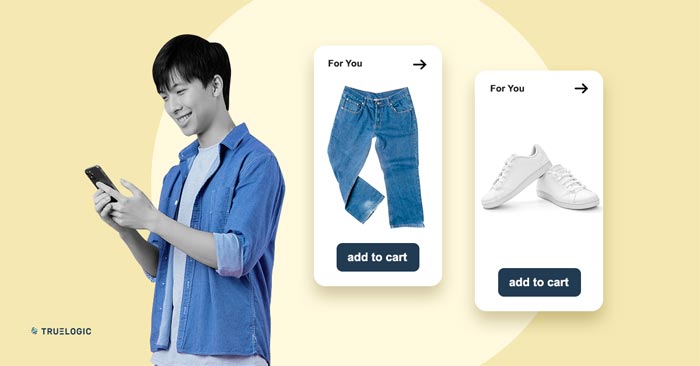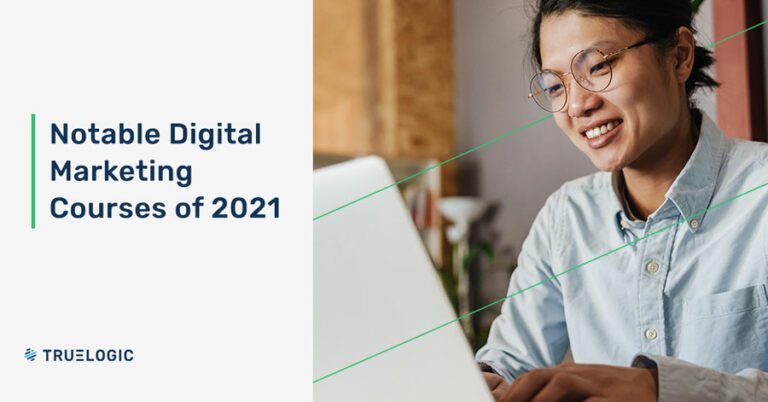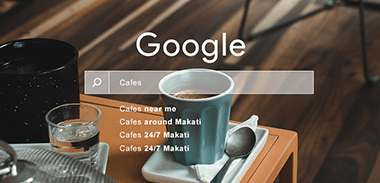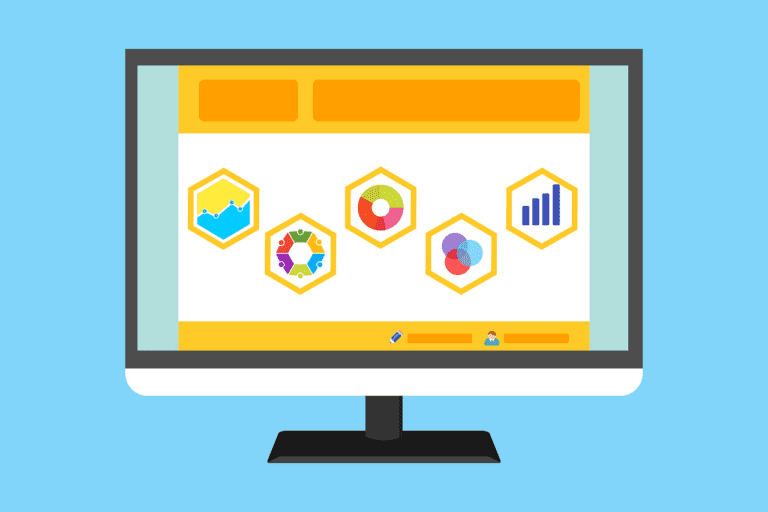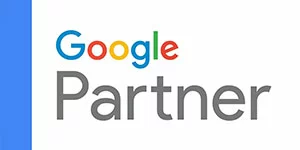How to Improve the ROI of Your PPC Campaign

Pay-per-click (PPC) advertising remains one of the most reliable ways to drive traffic and conversions in digital marketing. Google states that businesses earn an average of ₱8 for every ₱1 spent on ads, a strong case for why PPC continues to dominate performance marketing.
Whether you’re managing a small local campaign or handling enterprise-level budgets, understanding the factors that impact PPC ROI is essential. Knowing what drives performance allows you to make smarter decisions, spend efficiently, and achieve your goals faster.
What is Pay-Per-Click Advertising?
For marketers who’ve only recently stepped into the digital world, PPC might sound like jargon, but it’s actually quite straightforward.
PPC is an online advertising model where advertisers pay a fee each time their ad is clicked. Think of it as buying visits to your website instead of relying solely on organic traffic.
The most common form of PPC advertising appears on search engines like Google and Bing. Advertisers bid on keywords that trigger their ads when users search for related terms.
For example, if a fitness equipment brand bids for “home gym,” their ad appears in the search results when users type that phrase. When someone clicks the ad, the company pays for that visit, a direct exchange between visibility and cost.
This model is highly targeted, allowing businesses to attract users who are already searching for products or services like theirs. It’s fast, measurable, and scalable, which explains why it remains a core pillar of digital marketing strategies today.
10 Factors Affecting the ROI of PPC Campaigns
Getting a solid PPC ROI isn’t just about increasing your budget, it’s about optimizing what you already have.
1. How Does Keyword Selection Affect PPC ROI?
Keyword selection affects PPC ROI by determining how relevant your ads are to user intent. The more precisely you target search queries, the better your conversion rates.For example, choosing long-tail keywords like “women’s running shoes for flat feet” instead of broad terms like “shoes” helps you attract qualified traffic. people ready to buy, not just browse. This specificity leads to higher conversions and improved ROI.
2. Why Does Ad Copy Quality Matter in PPC Campaigns?
Ad copy quality matters because it influences whether users click and convert. Well-crafted copy boosts click-through rates (CTR), improves ad relevance, and reduces your cost per click (CPC).
A strong ad headline or persuasive message, like “Elevate Your Workout Style: Shop Premium Activewear”, can resonate with intent-driven users and drive meaningful engagement, improving overall ROI.
3. What Makes a Good Landing Page Experience?
A good landing page experience ensures users find exactly what they expect after clicking your ad. When your landing page aligns with your ad’s promise, conversion rates naturally rise.
Clear visuals, fast loading speeds, and a frictionless checkout process all contribute to a positive experience. The smoother the journey, the stronger your ROI on ads becomes.
4. How Does Quality Score Impact ROI?
Your Quality Score directly affects both cost and placement. Google evaluates your ad’s relevance, CTR, and landing page experience to assign a score.
A high Quality Score means lower CPCs and better ad positions, letting you stretch your budget further. Improving ad relevance and user experience not only raises this score but also boosts your PPC ROI.
5. Which Bid Strategy Should You Use for PPC?
The right bid strategy depends on your goals, whether it’s maximizing clicks, conversions, or ROI.
Manual bidding gives you control but requires constant monitoring. Automated bidding uses machine learning to optimize placements, though it may not always align with your exact objectives. Experiment and analyze results to find your sweet spot.
6. How Do Ad Extensions Improve PPC Performance?
Ad extensions improve performance by giving users more reasons to click, adding value, convenience, and trust.
Whether it’s a phone number, sitelink, or “Book Now” button, extensions expand your ad’s footprint and encourage engagement. More clicks and interactions mean better ROI, often without increasing ad spend.
7. When is the Best Time to Run Your PPC Ads?
The best time to run your PPC ads depends on your audience’s online behavior. Scheduling your ads during peak hours ensures visibility when potential customers are most active.
E-commerce stores, for instance, often see stronger conversions during lunch hours or weekends, when people have time to browse and buy.
8. Why Does Geographic Targeting Matter for PPC ROI?
Geographic targeting boosts ROI by focusing your ad spend where it actually counts.
Limiting your audience to specific areas (like a 10-kilometer radius around your store) minimizes wasted impressions and delivers better results per peso spent. Localized targeting keeps your ads relevant and your ROI healthy.
9. How Does A/B Testing Help Optimize ROI?
A/B testing helps identify which ad variations resonate best with your audience. By testing different headlines, visuals, or CTAs, you can discover what drives clicks and conversions most efficiently.
Even small changes, like phrasing or layout can dramatically impact engagement, making A/B testing one of the simplest ways to elevate your campaign’s PPC ROI.
What Role Does Conversion Rate Optimization (CRO) Play in PPC?
CRO bridges the gap between traffic and results. It ensures your site converts visitors into customers efficiently by improving elements like forms, visuals, and load speed.
If your landing pages are intuitive, trustworthy, and persuasive, your conversions increase, which naturally amplifies your PPC ROI.
Understanding ROAS and ROI in Your PPC Campaigns
Before optimizing your PPC ROI, it’s important to understand the two metrics that define profitability: ROAS (Return on Ad Spend) and ROI (Return on Investment).
While both measure success, they focus on different aspects of campaign performance.
ROAS (Return on Ad Spend)
ROAS measures how much revenue you earn from ads compared to what you spend on them.
It’s your go-to metric for evaluating the direct effectiveness of paid advertising.
Formula:
ROAS = (Revenue from Ads / Cost of Ads) × 100%
Example: If you spend ₱10,000 on ads and earn ₱50,000 in revenue, your ROAS is 500%. That means for every peso spent, you earn five pesos back.
A higher google ads average roi indicates stronger ad efficiency, but keep in mind that it only considers ad spend, not total business costs.
ROI (Return on Investment)
ROI, on the other hand, gives you a wider financial picture. It factors in all costs involved in running your campaign, from ad spend and tools to salaries and agency fees.
Formula:
ROI = (Net Profit from Campaign / Total Campaign Cost) × 100%
ROI helps you understand your campaign’s real profitability, not just its surface-level returns. A positive ROI means your campaign earned more than it cost; a negative one means you’re spending more than you’re gaining.
What is a Good ROI for Google Ads?
Marketers love asking this question, and for good reason. It’s one of the most revealing metrics in PPC. But here’s the honest answer: there’s no single “good” ROI for Google Ads.
On average, many businesses see a return of around 200% to 300% (earning roughly ₱2–₱3 for every ₱1 spent). But that’s just a benchmark, your ideal ROI depends heavily on your industry, competition, and profit margins.
Instead of chasing a fixed number, start by finding your break-even ROAS, the minimum revenue you need to cover your costs.
Here’s how to estimate it:
Break-Even ROAS = 1 ÷ Gross Profit Margin
For example:
- A business with a 25% profit margin needs at least a 4:1 ROAS (₱4 earned for every ₱1 spent) to break even.
- A business with a 60% profit margin only needs a 1.67:1 ROAS to break even, and can aim for 2.5:1 or higher to grow profitably.
For brands in competitive industries or with longer sales cycles (like B2B or real estate), breaking even in the early stages can still be a win, especially if you’re building customer lifetime value.
ROAS vs ROI: Which Should You Track?
Both metrics matter, but they serve different decision-making needs.
ROAS helps you fine-tune ad performance: which platforms, creatives, or keywords bring the best returns.
ROI tells you whether your entire marketing investment is generating profit for the business.
Use them together. A high ROAS might look great, but if your total ROI is negative, your ad efficiency isn’t translating to business growth.
Tip: For ongoing PPC campaigns, ROAS is best for day-to-day performance tracking, while ROI is ideal for quarterly or overall profitability reviews.
Importance of Measuring PPC ROI
Many businesses still treat ROI tracking as optional, which is like flying blind with a paid ad budget.
Understanding your ROIi on ads shows whether your marketing is actually driving profit or just generating clicks. It’s how you identify what works, what doesn’t, and where to double down.
Here’s why consistent ROI measurement is crucial:
1. Smarter Budget Allocation
ROI tracking helps you see which campaigns deliver returns and which are underperforming. This allows you to redirect your budget to the ads and keywords that actually move the needle.
When you know what’s profitable, you stop guessing, and start scaling strategically.
2. Better Performance Assessment
ROI gives you tangible insight into ad effectiveness. By analyzing ROI data, you can spot trends, identify wasted spend, and make informed decisions about where to improve.
3. Profitability and Long-Term Growth
It’s not just about short-term wins. ROI tells you whether your PPC strategy is sustainable. If your ROI stays positive over multiple campaigns, your marketing system is working efficiently, not just your ads.
4. Competitive Advantage
Tracking ROI gives you an edge over competitors who rely only on surface metrics like impressions or CTR.
When you know which campaigns yield the highest returns, you can outsmart—not outspend—your competition.
Tip: Treat ROI measurement as a habit, not a report. The more you track, the better your instincts (and optimizations) become.
Cost of PPC Ads
The cost of PPC advertising depends on several factors, your industry, keywords, audience size, and competition. The higher the search volume or commercial intent behind a keyword, the higher the cost per click (CPC).
While exact figures fluctuate, search ads generally cost more than display ads, since search users have stronger buying intent. Display ads, meanwhile, are better for awareness and retargeting, not immediate conversions.
On average, most businesses in the Philippines can expect their CPC to range from the low hundreds to a few hundred pesos, depending on keyword competition and ad quality.
Tip: Focus on improving your ad relevance and Quality Score. The more relevant your ads are, the less you pay per click, no matter the industry.
Google Display Ads
Display ads are visual ads that appear across Google’s Display Network (GDN), a vast collection of websites, apps, and YouTube channels. They’re designed to build awareness and re-engage users who’ve shown interest in your brand.
These ads come in formats like text, images, video snippets, or responsive combinations. The goal? Catch the user’s eye before they even start searching.
Average click-through rates (CTR) for Google Display Ads are typically under 1%, varying by industry and creative quality. Real estate, lifestyle, and dating categories tend to perform slightly above average, while B2B and tech sectors often see lower engagement due to niche audiences.
Tip: Strong visuals and tailored messaging are everything. A crisp layout, short headline, and relevant offer can lift CTR dramatically without increasing your ad spend.
Conversion Rates (CVR) in Google Display Ads
A conversion rate (CVR) measures how many users complete a desired action, such as a purchase or sign-up, after clicking your ad.
Display campaigns typically see lower CVRs than search campaigns, since users aren’t always in buying mode when they encounter your ads. But with the right targeting, display ads can still drive solid results.
Industries with direct-consumer offers (like dating services, online learning, or consumer products) often see conversion rates several times higher than informational or B2B industries.
To boost your PPC ROI from display ads:
Tip: Even a small increase in CVR can lead to a major lift in ROI. If your display ads convert 1% instead of 0.5%, you’ve effectively doubled your return without raising your spend.
How is ROI Calculated in PPC?
Understanding how to calculate ROI is key to evaluating campaign performance and making smarter marketing decisions.
The formula is simple:
ROI = (Revenue – Cost) / Cost
Where:
A positive ROI means your campaign earns more than it costs; a negative ROI means you’re losing money.
Example:
Let’s say you spend ₱40,000 on your campaign and generate ₱150,000 in revenue.
ROI = (₱150,000 – ₱40,000) / ₱40,000 = 2.75
That means for every peso spent, you earned ₱2.75 back, a solid return.
Tip: Always factor in all campaign costs, not just ad spend. That includes tools, creative work, and manpower. It’s the only way to get a true picture of your PPC ROI and long-term profitability.
Best Practices to Maximize the ROI of PPC Campaigns
PPC performance is rarely “set it and forget it.” The best results come from continuous refinement, testing, tweaking, and tracking.
Here’s how to ensure your PPC ROI keeps climbing:
1. Monitor Campaign Performance Regularly
Keep an eye on key metrics like CTR, CPC, and conversion rates. Regular monitoring lets you catch underperforming ads early and adjust before you waste spend.
Example: A retail brand noticed declining CTRs mid-campaign. By refreshing their creatives and tweaking ad copy, they regained momentum and improved ROI within weeks.
2. Conduct In-Depth Keyword Research
Use keyword tools to identify relevant, low-competition, high-intent terms. Long-tail keywords often deliver better conversions at lower costs.
Example: A real estate brand focusing on “3-bedroom apartments in Taguig” instead of “apartments” achieved higher conversions and lower CPC.
3. Optimize Your Ad Copy
Your ad copy is the first impression. Focus on benefits, not just features. Clarity plus urgency is equal to clicks.
Tip: Test variations of your headlines and CTAs through A/B testing to see what language resonates most with your audience.
4. Refine Landing Pages
A click means nothing if your landing page underdelivers. Ensure your design is fast, mobile-friendly, and aligned with your ad message.
Neglecting this step is like inviting customers into a store with broken lights, they’ll leave fast.
Tip: Use one focused CTA per landing page. More choices = more friction = fewer conversions.
5. Use Negative Keywords
Filtering out irrelevant traffic saves money. Add negative keywords to prevent your ads from showing on unrelated searches.
Example: A bakery targeting “wedding cakes” excluded “birthday cakes” to reduce wasted clicks and boost ROI.
6. Allocate Budget Strategically
Shift more budget to campaigns or keywords that deliver the strongest returns.
Tip: Small reallocation tweaks can make a huge difference, increasing top-performing ad spend by even 10–20% can lift your overall ROI significantly.
7. Analyze Competitors
Watch what competitors are promoting, then find the gaps they’re missing. Competitive insights help you position your ads better without copying.
Example: An electronics retailer noticed a rival’s promotion and countered with faster shipping, keeping engagement and ROI strong.
8. Test, Learn, and Repeat
PPC is never static. Keep testing ad variations, creative angles, and targeting combinations. Every test adds to your data, and every insight compounds.
Tip: Run small-scale tests first to minimize spend, then scale what works.
Benefits of PPC for Your Business
When done right, PPC doesn’t just drive traffic, it drives results. From visibility to control, here’s why it remains one of the most effective digital marketing tools available today:
1. Immediate Visibility
PPC campaigns can put your business in front of potential customers instantly.
Imagine owning a local pizza place and targeting the keyword “best pizza near me.” With PPC, your ad can appear right when people in your area start craving lunch—instant awareness and instant opportunity.
Tip: PPC can increase brand recognition by up to 80%. Combine it with strong local SEO, and you’ll dominate both paid and organic search results.
2. Measurable Results
One of PPC’s greatest strengths is measurability. You can track where every peso goes and what it returns.
From clicks to conversions, everything is visible, so you can fine-tune campaigns in real time to improve your PPC ROI.
3. Full Budget Control
You decide how much to spend, where to spend it, and when to pause or scale up.
This flexibility makes PPC ideal for seasonal promotions, flash sales, or ongoing campaigns. Whether your budget is ₱10,000 or ₱100,000, PPC adapts to you, not the other way around.
4. Laser-Focused Targeting
PPC lets you reach your ideal audience through precise targeting: location, age, interests, and even device type.
An automotive brand launching electric vehicles, for example, can target eco-conscious consumers in Metro Manila aged 25–45, people who are both interested and capable of buying.
5. Flexibility and Agility
Markets change fast, and PPC keeps up.
You can easily tweak keywords, budgets, or creatives based on new trends or data insights. That level of adaptability helps your ads stay relevant and profitable, even when consumer behavior shifts.
Tip: Treat PPC as a live campaign, not a set-it-and-forget-it strategy. The more you monitor, the faster you optimize.
The Significance of Measuring ROI for Your Digital Marketing Campaign
Tracking ROI isn’t just a numbers exercise, it’s how you prove your marketing actually works.
According to Truelogic Managing Partner Bernard San Juan III, digital success depends on understanding which part of the customer journey you’re trying to influence.
Your google ads average ROI will vary depending on where your campaign plays in that funnel.
Why This Matters for PPC
PPC sits at the intersection of all three funnel stages, from awareness ads to conversion-driven retargeting. Measuring ROI across each layer ensures you’re spending where it truly matters.
By aligning ROI goals with your business objectives, you’ll be able to:
Tip: Don’t just measure ROI once per campaign. Track it continuously—it’s your best compass for long-term marketing success.
What Are the Roadblocks to Proper ROI Tracking?
Even with the best tools and intentions, tracking ROI accurately can get messy.
Marketing leaders often face a few common challenges that skew results or limit visibility.
Here’s what usually stands in the way:
1. Confusing Media Metrics with Digital Metrics
According to Bernard San Juan III, one of the biggest mistakes businesses make is applying traditional media thinking to digital campaigns.
“I’ve been asked what the CPM of a campaign is, but CPM is a media metric, not a digital one. Most businesses can’t yet connect digital metrics to real business outcomes, so they focus on activity instead of results.”
Tip: Focus on performance metrics like cost per conversion, return on ad spend, and overall PPC ROI—they’re what truly matter in the digital space.
2. Hard-to-Measure Values
Not everything fits neatly into a spreadsheet. Brand awareness, reputation, and word of mouth can all affect ROI but are difficult to quantify.
That said, you can still assign proxy metrics, such as branded search growth or engagement spikes, to gauge their impact over time.
3. Not Using the Right Tools
Many businesses still rely on intuition or incomplete data. But ROI tracking today is easier than ever with tools designed for precision.
Tip: Tools don’t replace strategy, they amplify it. Regularly review data from multiple sources to form a more accurate ROI picture.
What’s the Bottom Line?
At the end of the day, ROI is what separates busy marketers from effective ones.
Tracking and optimizing your roi on ads isn’t just about proving results, it’s about shaping smarter, more profitable campaigns over time.
PPC ROI measurement helps you see what’s working, refine what isn’t, and ensure that every peso spent brings your business closer to its goals.
And while tracking ROI can feel complex, the right strategy and tools make it achievable, even for growing brands.
Here’s the takeaway:
Marketing is an investment, not an expense. The more clearly you understand your ROI, the more confidently you can scale your success.
If you’re ready to make every click count, start by asking:
“Is my next campaign optimized for profit or just performance?”
Because in digital marketing, profit is the metric that truly pays for everything else.


